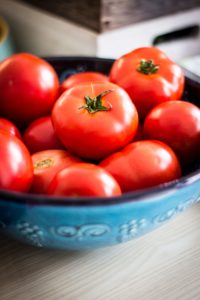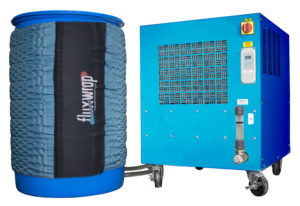Perishables and Temperature Control
Whether you vote red or blue, there is one thing everyone can agree on: food. Although technology for transporting perishable goods has advanced dramatically, keeping perishables cool can be a problem for people who do not have large scale refrigeration resources. Read on for solutions for keeping produce fresh.
Goodness Gaseous: Understanding Ethylene and Respiration
Ethylene, often referred to as the ‘death’ or ‘ripening hormone’, is an odorless, colorless, gaseous plant hormone that exists in nature. Not easily detectable, the largest producers are plant and plant products (ie. fruits, vegetables and floral products) which have ethylene within their tissues and release it into the surrounding atmosphere.

Flowers, fresh fruits, and vegetables remain alive by respiration, which is their process of converting fuel into energy. High respiration rates rapidly create more ethylene, and deplete stored carbohydrates (fuel) which shortens the life of the produce. Respiration also increases as temperature increases, and therefore temperature control during transport is critical for food and other perishables to be fresh on delivery (Benkeblia).
 Flower Power: How to Keep Flowers Fresh
Flower Power: How to Keep Flowers Fresh
Flowers go through respiration just like other produce. The trick to keeping them alive is to store and ship them in cooler temperatures. A flower held at 86°F/30°C will age (respire) up to forty-five times as fast as a flower held at a colder 36°F/2°C. When cooler temperatures are applied and the cold chain is maintained, the vase life of cut flowers is greatly extended (Reid).
Food Fight: Using Cold to Preserve Perishables
Produce temperature is the most important factor affecting its quality and preventing food wastage. For fruits and vegetables, respiration increases by a factor of two to five for each 18°F/10°C increase in temperature above the recommended holding temperature. For example, strawberries, raspberries, and blackberries have a shelf life of seven days at 32°F/0°C, but only one day at 68°F/20°C. Longer-lived produce such as green beans, mushrooms, and green onions last only two to three days at 68°F/20°C. Above 86°F/30°C the produce will die or lose quality rapidly (Benkeblia).
All the way through the cold chain, produce should be held at its lowest recommended storage temperature. Keeping temperature in check is vital.

 Keep Perishables Cool with North Slope Chillers
Keep Perishables Cool with North Slope Chillers
So how do you keep perishables cool and safe without investing in a reefer truck? Your operation needs cooling; however, you do not have the resources to support large-scale refrigeration. North Slope Chillers offers innovative industrial cooling systems that will keep your assets safe. With the new North Slope Chillers industrial cooling product line, you can efficiently regulate temperature-sensitive material under both regular and hot conditions, preventing food wastage. Transporting perishables and other heat sensitive materials is no longer a major challenge.
- Ready-to-ship industrial cooling / process cooling products are available for 15, 30, & 55-gallon drums, and for 5-gallon buckets.
- Custom systems can be designed for a large variety of industrial cooling applications, and shipped within 2 weeks.
- Blankets use North Slope Chiller’s patented heat-spreading technology in reverse to draw heat to the blanket and cool the contents of the container
- Blanket cover and insulation are the same as the robust system used in Powerblanket heating products
- North Slope Chillers industrial cooling systems are portable (120VAC required)
- Control the temperature of your equipment or bulk materials
- When materials are delivered too hot, waiting for the material to cool can mean lost hours/days
- Blankets can be left installed and running while bulk material containers are in use
Works Cited
Benkeblia, Noureddine. “Transportation of fresh horticultural produce”. Post harvest Technologies for Horticultural Crops, 2009, Vol. 2. 8 March 2017. http://ucce.ucdavis.edu/files/datastore/234-1291.pdf
“Flower Care”. Grower Direct. 9 March 2017. http://www.growerdirect.com/flower-care-ethylene-gas
Reid, M.S. “Handling of Cut flowers for Export”. 8 March 2017. http://ucce.ucdavis.edu/files/datastore/234-1906.pdf
Keep your products and processes within the desired temperature range with Powerblanket's industrial cooling solutions.


 Flower Power: How to Keep Flowers Fresh
Flower Power: How to Keep Flowers Fresh Keep Perishables Cool with North Slope Chillers
Keep Perishables Cool with North Slope Chillers